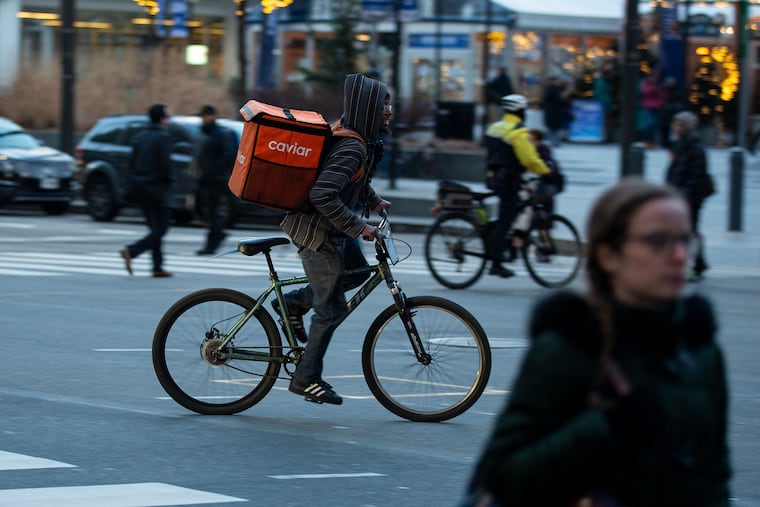City Council approves changes in food-delivery fees paid by restaurants
The fee cap can remain, but restaurants may opt into a higher fee tier in return for additional services from delivery companies such as DoorDash, Grubhub, and UberEats.

City Council overwhelmingly approved changes in the service fees charged by food-delivery companies, which were capped temporarily in 2020 to help restaurants coping with the pandemic-related economic downtown.
The bill now heads to Mayor Jim Kenney, whose representatives said he was reviewing it. In testimony, the administration had supported the overall intent.
Under the bill, the 15% cap will remain, but restaurants may opt into a higher fee tier in return for additional services from delivery companies such as DoorDash, Grubhub, and UberEats. The plan, introduced by Councilmember Cherelle L. Parker, was approved, 16-1, with David Oh opposing.
A representative of Oh said a temporary cap was “the right thing to do. However, permanently restricting what a business can charge its customer appears to be an unnecessary, and potentially illegal, overreach of municipal government.”
Since July 2020, the city has capped service fees to restaurants at 15% — 10% for delivery and 5% for marketing — during what the city calls a “declaration of extraordinary circumstances” and for 90 days after. Total fees previously had been 20% to 40% — a figure that restaurateurs said was too high, given restaurants’ traditionally low profit margins, typically in the single digits.
In March 2020, the pandemic sent the public to delivery apps in droves, changing the way many restaurants do business. Parker asked the Pennsylvania Restaurant and Lodging Association, which represents 350 restaurants in the city and nearly 4,000 statewide, to meet with representatives of the delivery services to help amend the temporary law.
Permanent fee caps instituted by other large cities, including New York, have ended up in court. The delivery services have said that permanent price controls are unconstitutional and would drive up costs for consumers.
Some restaurateurs offer delivery and encourage customers to bypass the apps entirely by calling the restaurants directly or by opting for pickup.